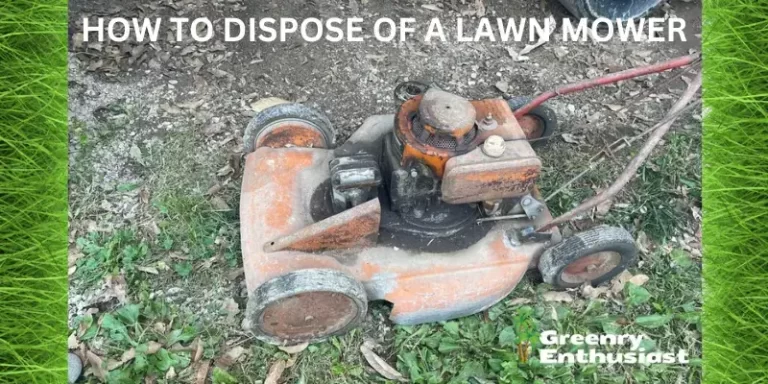How to use a Zero Turn Mower in Sandy Soil?
I recently faced the challenge of maintaining my lawn in an area with sandy soil. Using a zero-turn mower on sandy soil brought its own set of hurdles and discoveries. Sandy soil is more prone to dust, which can be a problem for both the mower and the operator. Additionally, sandy soil can be more difficult to cut evenly, especially if it is dry. Furthermore, sandy soil can be more abrasive on mower blades, so they need to be sharpened more frequently.
Like myself, many people are asking about How to use a Zero Turn Mower in Sandy Soil. So, I’ve decided to share my journey, the ups and downs, and some valuable insights on how to make the most of your zero-turn mower in sandy soil.
Understanding Sandy Soil:
Sandy soil, as I learned, is made up of mostly sand particles, which are larger than silt and clay particles. These sand particles have a unique set of characteristics that influence how your mower operates. Firstly, sand particles drain water quickly, which is why sandy soil is often dry. This rapid drainage can affect the moisture levels in the soil and, in turn, influence your mowing experience.
Moreover, sand particles tend to shift easily, which is why sandy soil can be more difficult to mow evenly. The loose, shifting nature of the soil can make it a bit like trying to mow on constantly changing terrain. As a result, it’s essential to understand these characteristics to effectively use a zero-turn mower on sandy soil.
The Impact on Zero-Turn Mower Performance:
Using a zero-turn mower on sandy soil made me realize that patience is key. I found that going slow and steady was the best approach. When you rush, the mower’s tires might slip, and the results won’t be as good. So, take your time.
Moreover, the lightness of sandy soil can cause the mower to bounce and skip, making it difficult to achieve a clean cut. It’s like trying to mow on an uneven surface, and this can leave your lawn looking less tidy. So, a steady hand and a bit of patience go a long way in ensuring a well-manicured lawn.
Additionally, I can’t stress enough the importance of keeping your mower blades sharp. Dull blades won’t cut it – literally. Sharp blades make the job easier and leave your lawn looking clean and tidy. The abrasive nature of sandy soil can wear down mower blades and other components more quickly. So, regular blade maintenance is a must to keep your mower in top shape.
What’s more, the dust generated by mowing on sandy soil can clog the mower’s engine and air filter, reducing performance and increasing the risk of breakdowns. Keeping the engine clean and the air filter clear of dust is essential to maintain your mower’s efficiency in sandy conditions. So, with patience, sharp blades, and some preventive maintenance, you can overcome the challenges of using a zero-turn mower on sandy soil and achieve a well-groomed lawn.
Step-by-Step Guide to Adjusting Your Mower for Sandy Terrain
When using a lawnmower in sandy soil, it is important to adjust the zero-turn mower to an appropriate level of height to prevent damage to the mower as well as to the grass. Some of the important key points are as follows:
Select the Appropriate Mower Blades
Whenever you start mowing in sandy soil, opt for blades that are specifically designed for that terrain. These blades are made of hard material and have a higher tolerance for abrasive surfaces.
Adjust the Tire Pressure
Tire pressure plays a key role in rough/ sandy terrain. Lowering the tire pressure slightly increases the traction of your mower in these terrains. It helps you prevent the mower from slipping or sinking into the sand.
Set the Correct Mowing Height
Raise the deck to avoid scalping the lawn. In sandy soil, the lawn surface is uneven, so you can adjust the height higher than normal so that I cannot dig into the sand and it does not damage the turf.
Reduce Mowing Speed
Another important point to note is to reduce the speed in these terrains because there is a chance of damage to your mower and blades if your mower starts throwing sand instead of meowing. So always mow at a slow speed
Regularly Clean the Mower
After each use, clean your mower thoroughly. Sandy soil can accumulate in various parts of the mower, leading to abrasion and possible mechanical failures. Focus on the deck, blades, and air filters, as these are most susceptible to sand damage.
Inspect and Replace Air Filters Often
Similarly, if you are using your mower in sandy soil, you need to inspect the air filter; it is clogged due to the sand and might be harmful to your mower engine. Always inspect the filter, and if it gets dirty, clean it properly in bad condition and replace it with a new one regularly to avoid any further faults in your lawnmower.
These steps are essential for your mower and lawn safety Always follow these steps when you are mowing in sandy soil to avoid any trouble with your mower as well as with your lawn.
Valuable Mowing Tips and Tricks – Use Zero Turn Mower in Sandy Soil
What i learned i share these in the form of tips and tricks I discovered while using a zero-turn mower on sandy soil:
Timing Matters:
Try to avoid mowing when the soil is bone-dry. It creates a dusty mess. Opt for early morning or late evening when the temperature is cooler for a smoother mowing experience.
Go Slow on Turns:
Sandy soil doesn’t offer the same traction as other soil types. So, when you make those sharp turns with your zero-turn mower, go easy to avoid slipping.
Adjust the Mower Deck Height:
it is important to raise the mower deck height slightly. This adjustment helps prevent the mower from digging too deep and leaving uneven patches in your lawn.
Mow in the Direction of the Grain:
To reduce the amount of dust generated, mow in the direction of the grain of the sandy soil. This not only keeps things tidier but also makes your mowing experience more pleasant.
Avoid Mowing When the Soil is Very Dry:
Mowing on extremely dry soil is not only dusty but can also lead to a less clean cut. Try to pick a time when the soil is slightly moist to make your mowing job easier.
Sharpen Your Mower Blades Regularly:
I noticed that sharp blades are mandatory to Sharp blades cut more cleanly and reduce the risk of scalping the lawn. To keep your mower in top shape, make sure to sharpen the blades at regular intervals.
Related Post: if you want to learn how to sharpen your blades on your own. Click here
Clean Your Mower After Each Use:
After mowing, give your mower a good clean. This helps remove dust and sand buildup, which can damage the mower’s components over time. Keeping your mower clean ensures it remains efficient and in good working condition.
Selecting the Right Blades:
When it comes to blades, you’ll find two main options: regular blades and mulching blades. For sandy soil, I recommend sticking with regular blades. They work just fine and are simpler to maintain.
Learn about the best blades for all terrains
Answering Common Questions (FAQs):
Conclusion
In conclusion, using a zero-turn mower on sandy soil is indeed possible. With a little patience, sharp blades, and the right timing, your lawn will thank you. By following these tips and answering some common questions, you can easily mow the sandy soil on your own. if you have any questions feel free to contact us.







